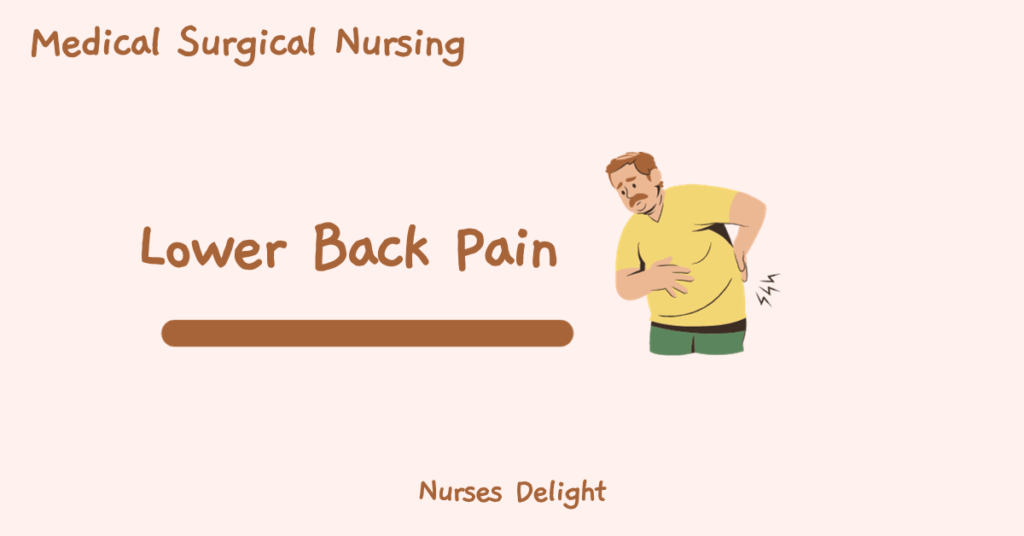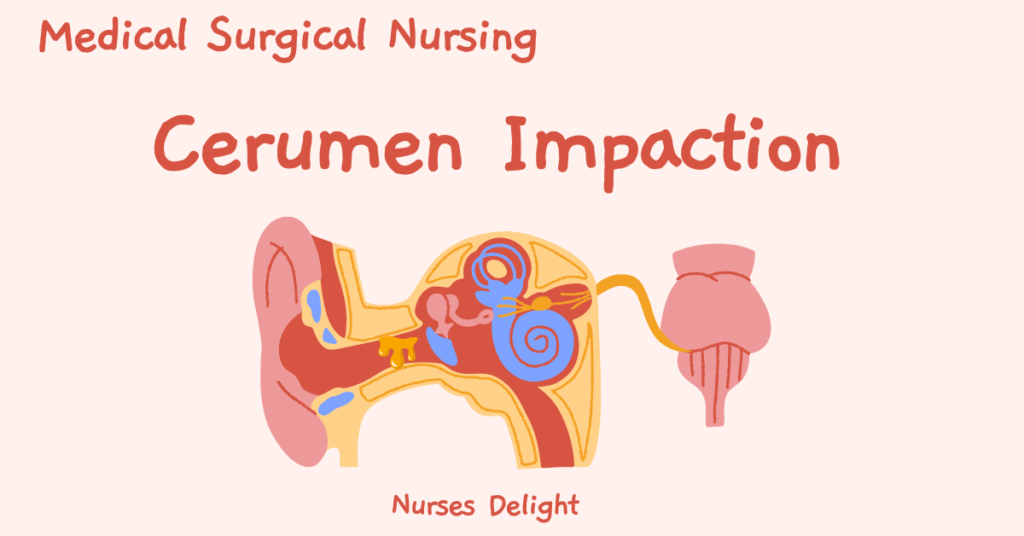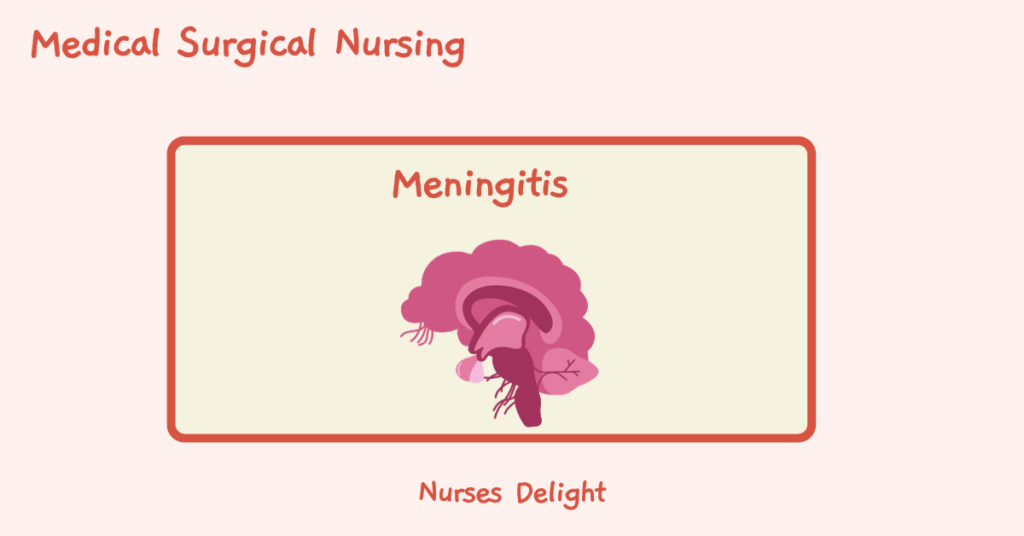Low back pain (LBP) describes pain between the lower edge of the ribs and the buttock. (WHO,2023).
It is caused by;
- Acute lumbosacral strain
- Unstable lumbosacral ligaments
- Weak lumbosacral muscles
- Intervertebral disc problems
- Unequal length of the lower limbs
- Osteoporosis
- Spinal stenosis
- Kidney disorders
- Pelvic disorders
- Retroperitoneal tumors
- Abdominal aortic aneurysm
- Obesity
- Postural problems
Pathophysiology of Back Pain
- Together, the thoracic and abdominal muscles support the spine and reduce strain on the spinal units.
- The underlying muscle structures become weaker with disuse. Obesity-related postural issues can cause overstretching of the spinal supports.
- As people age, their intervertebral discs undergo a change in nature. Young people’s discs are primarily made of gelatinous matrix and fibrocartilage.
- Over time the fibrocartilage becomes dense and irregularly shaped. L4-5 and L5-S1 are subject to the greatest mechanical stress and the greatest degenerative changes.
- Disc protrusion or facet joint changes can cause pressure on the nerve roots as they leave the spinal canal which results in pain that radiates along the nerve.
Clinical Manifestations
- Acute back pain lasting less 3 months
- Chronic pain lasting more than 3 months
- Fatigue
- Pain radiating to the leg known as radiculopathy (pain radiating from a diseased spinal nerve root)
- Sciatica (pain radiating from an inflamed sciatic nerve)
- Gait, spinal mobility reflexes, leg length, leg motor strength, and sensory perception may be affected
- Paravertebral muscle spasms (greatly increased muscle tone of the back postural muscles) with a loss of the normal lumbar curve and possible deformity.
Assessment and Diagnostic Findings
- Observation of patient’s gait, evaluation and neurologic testing suggest nonspecific lumbar strain or potentially serious problems such as spinal fracture cancer infection or rapidly progressive neurologic deficit.
- X ray of the spine may detect a fracture dislocation infection osteoarthritis or scoliosis
- Bone scan and blood studies may disclose infections tumors and bone marrow abnormalities
- Computed tomography scan may identify obscure soft tissue lesions adjacent to the vertebral column and problems of vertebral discs
- Magnetic resonance imaging scans visualizes the nature and location of the spinal pathology
- Electromyogram EMG and nerve conduction studies are used to evaluate spinal nerve root disorders radiculopathies
- Myelogram permits visualization of segments of the spinal cord that may have herniated or may have compressed. It is done only when MRI scan is contraindicated
- Ultrasound is used to detect tears I ligaments muscles tendons and soft tissues in the back
Medical Management
- Most back pain is self-limited and resolves within 4 to 6 weeks with analgesics rest and avoidance of strain
- Management focuses on relief of discomfort, activity modification, and patient education
- NSAIDS and short-term prescription muscle relaxant like cyclobenzaprine are effective in relieving acute low back pain
- Tricyclic antidepressants, amitriptyline and the dual action serotonin norepinephrine reuptake inhibitors or atypical anticonvulsant medication like gabapentin which are used to treat radiculopathic pain
- Opioid medication for acute moderate to severe low back pain except in older adults and kidney disease
- Thermal application (hot or cold) may also be used to alleviate the pain
- Spinal manipulation like chiropractic therapy
- Lumbar belts are not recommended
- Orthopedic shoe inserts are not recommended but may help manage contribution to the problem e.g. short leg length.
- Cognitive behavioral therapy, exercise massage and yoga
- Avoid aggravating factors like twisting bending lifting and reaching all of which stress the back
- Limit sitting to 20-50 minutes based in the level of comfort
- Resume ADLS as soon as possible and a low stress aerobic exercise is recommended
- Conditioning exercises are recommended for both back and trunk muscles are begun about 2 weeks to help prevent the occurrence of pain
Nursing Management
Assessment
- Ask patient to describe the discomfort, severity, duration, characteristics, radiation and weakness in the legs
- History work and recreational activities help identify area for back health education
- Observe posture positions changes gait
- On physical exam, spinal curve any leg discrepancy and pelvic crest and shoulder symmetry
- Palpate the paraspinal muscles for spasm and tenderness
- Assess deep tendon reflexes sensations and muscle strength to evaluate nerve involvement. Back and leg pain on straight leg raising (with the patient supine the patient’s leg is lifted upward with the knee extended) suggest nerve toot involvement
Intervention
- A medium to firm non-sagging mattress is used
- Lumbar flexion is increased by elevating the head and thorax 30 degrees by using pillows or a foam wedge and slightly flexing lateral position support on a pillow
- Alternatively, the patient can assume a lateral position with knees and hips flexed (curled position) with a pillow between the knees and legs with a pillow supporting the head
- Avoid probe position as it accentuates lordosis
- Patient should get out of the bed by rolling to one side and placing the legs down while pushing the torso up, keeping the back straight
- Prevent ling acute low back pain
- Weight reduction as needed
- Avoid heels
- Walk daily and gradually increase the distance and pace
- Avoid jumping and jarring activities
- Stretch to enhance flexibility
- Body mechanics such as
- Good posture
- Avoid twisting lifting objects above waist level and reaching up for any length of time
- Push objects rather than pull them
- Keep load close to your body when lifting
- Lift wit the large leg muscles not the back muscles. Avoid lifting more than one third of their ideal body weight without help
- Squat while keeping the back straight when it is necessary to pick something up off the floor
- Bend your knee and tighten abdominal muscles when lifting
- Use a wide base of support
- Work modification By
- Adjust height of chair using a footstool to position knees higher than hips
- Adjust height of work area to avoid stress on back
- Avoid bending twisting and lifting heavy objects
- Avoid prolonged standing and repetitive tasks
- Avoid involving continuous vibration
- Use lumbar support in straight back chair with arm rests
- When standing for any length of time rest one foot on a small stool or box to relieve lumbar lordosis



